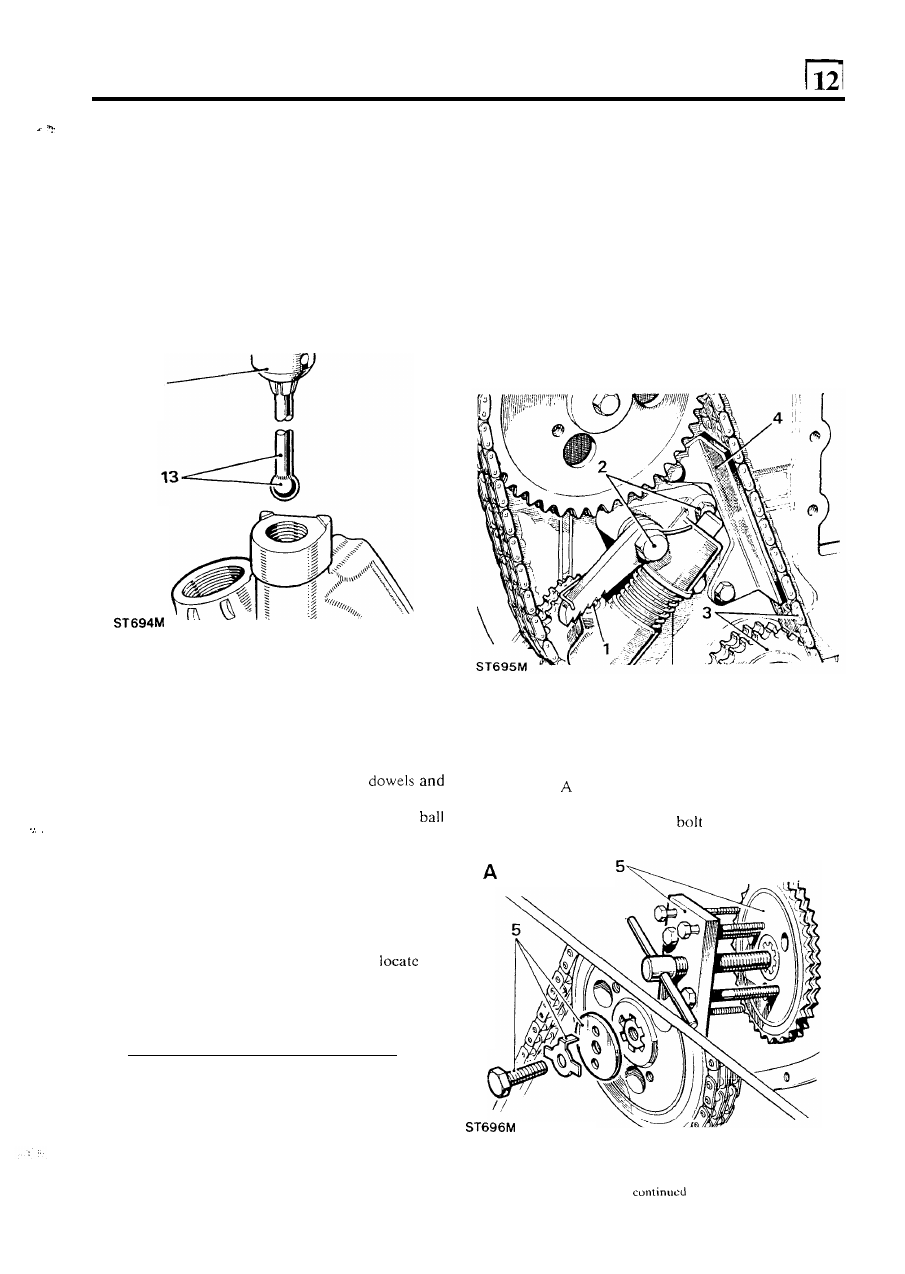Defender 90 / 110 / 130. Manual - part 21

2.25 LITRE PETROL AND DIESEL ENGINE
13.
A
scored ball valve seat can be restored by using
a
locally made lapping tool by silver soldering a new
ball (part number 3748) onto a length of suitable
tube.
14. Install the tube
in a drill and lap-in using coarse
grinding paste. Finally hand-lap the seat with
fine
paste using the same diabalo method as
for lapping
valves.
15. Thorougly wash the pump body to remove all
traces of grinding paste.
.
14
REMOVE AND OVERHAUL THE TIMING CHAIN,
SPROCKETS AND TENSIONER
1. Remove the timing cover. Before removing the
timing chain tensioner notc the ratchet position
in
relation to t h e pawl which will give an indication
of
chain wear. If the last tooth
of the ratchet is engaged
with the pawl t h e chain
is excessively worn and
should be discarded.
2. Remove the ratchet pivot bolt, plain bolt and
n u t
and withdraw the timing chain tensioner complete.
3. Remove the timing chain and crankshaft sprocket.
4. Remove timing chain damper.
Assemble
the oil
pump
16. Fit the idler gear to the spindle.
17.
Fit the driven gear with plain part of the bore
uppermost. See illustration after instruction 9.
18. Smear the joint face of the body with jointing
compound and fit the cover over the
secure with the
four bolts and spring washers.
19.
Hold relief valve bore vertically and insert the
followed by the plunger with the ball seat end first.
Fit the spring, sealing washer and plug.
20. Fit the oil strainer sealing ring
to the
pump body
followed by the lock washer and strainer. Tighten
the strainer retaining nut
so that when fitted the
strainer is positioned parallel to the sump baffle
plate. Secure t h e nut with the lock washer tab.
Later engines are fitted with
a bracket to
the
strainer.
5 .
Remove the camshaft sprockct retaining bolt and
washer. Withdraw the sprockct using chain wheel
extractor 507231
or similar.
Illustration
shows the early retaining bolt and tab
washer.
Illustration
B shows the latest
and special washer.
.
3